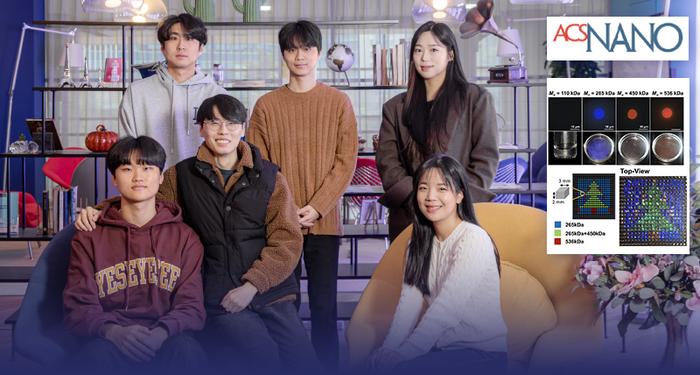A groundbreaking technology that enables the real-time display of colors and shapes through changes in nanostructures has been developed. This innovative technology, pioneered by Professor Kang Hee Ku and her team in the School of Energy and Chemical Engineering at UNIST, has the potential to revolutionize various fields, such as smart polymer particles.

Credit: UNIST
A groundbreaking technology that enables the real-time display of colors and shapes through changes in nanostructures has been developed. This innovative technology, pioneered by Professor Kang Hee Ku and her team in the School of Energy and Chemical Engineering at UNIST, has the potential to revolutionize various fields, such as smart polymer particles.
Utilizing block copolymers, the research team has achieved the self-assembly of photonic crystal structures on a large scale, mimicking natural phenomena observed in butterfly wings and bird feathers. By reflecting the shape and direction of nanostructures, this technology allows for the visualization of vibrant colors and intricate patterns in real time.
Block copolymers, composed of two or more different monomers covalently bonded in a block shape, were strategically employed to induce phase separation using a non-mixing liquid droplet. Professor Ku emphasized the significance of this achievement, stating, “We have successfully generated hundreds of flawless photonic crystal structures through the autonomous organization of block copolymers, eliminating the need for external manipulation.”
Setting itself apart from conventional methods, this cutting-edge technology leverages internal nanostructures to create colors that are vivid, long-lasting, and sustainable. Furthermore, its enhanced applicability in display technology is evident through its capability to pattern large areas efficiently.
The key innovation lies in the use of a polymer that can dynamically adjust the size of microstructures within particles in response to changes in the external environment. By leveraging the unique properties of polystyrene-polyvinylpyridine (PS-b-P2VP) block copolymers, the structure, shape, and color of the particles can be tailored, reverting to their original state despite environmental variations.
Real-time monitoring of structural changes revealed that the size and color of micro-nanostructures adapt to fluctuations in alcohol concentration or pH value. Notably, the particles produced through this technology exhibit an innovative ‘Ice Cream Cone’ shape structure, combining aspects of solids and liquids to visualize fluid vibrations and dynamically alter shape and color in response to external stimuli.
Professor Ku showed confidence about the potential applications of this research, stating, “This study opens doors to the creation of self-assembling optical particles, streamlining the complex process conditions typically associated with colloidal crystal structure and pattern formation.” She further noted, “The technology’s practical applications in smart paint and polymer particles across various industries are envisioned.”
Published in the February 2024 issue of ACS Nano, the research received support from the National Research Foundation of Korea (NRF), the Ministry of Science and ICT (MSIT), and the Korea Toray Science Foundation, underscoring collaborative efforts driving this groundbreaking innovation.
Journal Reference
Juyoung Lee, Soohyun Ban, Kyuhyung Jo, et al., “Dynamic Photonic Janus Colloids with Axially Stacked Structural Layers,” ACS Nano, (2024).
Journal
ACS Nano
Article Title
Dynamic Photonic Janus Colloids with Axially Stacked Structural Layers
Article Publication Date
2-Feb-2024





